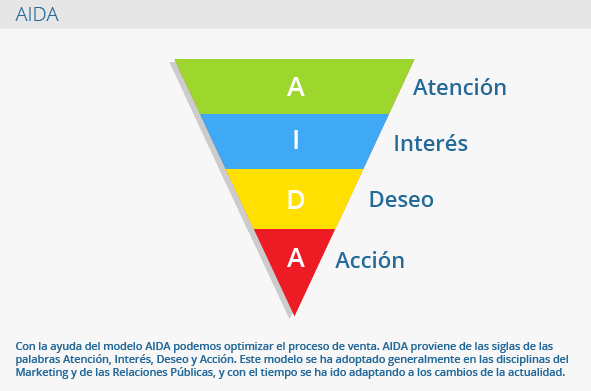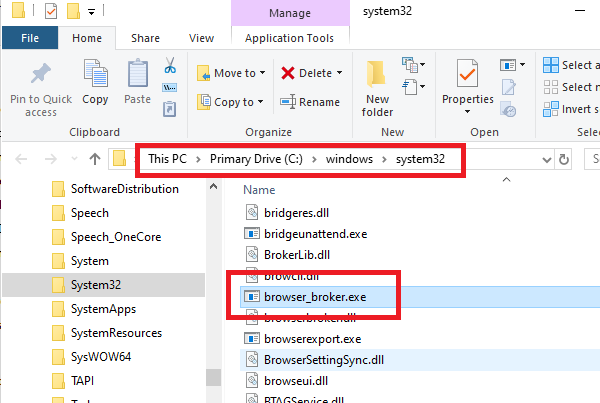The model AIDA It is based on a formula created at the end of the 19th century by an American businessman. The use of this model in the sales procedure is about making the most of the 4 stages that make it up. AIDA It is composed by the acronym of Attention, Interest, Desire and Action. This model has been frequently updated and modified in the context of Marketing and Public Relations.

Origin
When the American E. St. Elmo Lewis created this model in 1898, its application was exclusively focused on the field of telephone sales and the relationship between seller and buyer related to the sale of a product. The conversation for the sale focused on 4 points:
- Attracts attention: Before completing the sale, draw attention to the product.
- Keep interest: If the customer is interested in that product, keep them interested.
- Create Wish: Generate the desire to have said product.
- Create Action: when the desire to purchase has been caused, it encourages the action of buying it and making the payment.
After these 4 steps the customer decided to buy and made the purchase.
Apps
The model AIDA It has had a great effect on marketing and sales for over 100 years now, and the formula is still found in Marketing books today. It is also used in the field of Public Relations to organize and review campaigns and is very useful for reviewing advertising messages. The advantage of this model is its ability to adapt to other professional fields and not only to sales.. For example, we could review the effectiveness of ads in online stores by comparing the strategy carried out with the formula AIDA.
This model has been redesigned several times and two more sections have been integrated: "Confidence" and "Satisfaction". Its name, therefore, includes different versions: AIDA, AIDAS or AIDCAS.
Practical example
Objective: bring a new product or service to the market.
Attention: the first thing to do is launch a marketing campaign to publicize the product or service. There are many ways to publicize a brand or product, such as sponsoring events or launching a CPC campaign.
Interest: After attracting the attention of customers, it is time to create interest. The most used way is through online marketing campaigns, such as offering a free sample of the product.
Desire: Before the launch of the product or service, marketing actions can be carried out through social networks, where a discount or an offer can be offered. In addition, traditional means of communication can be used, such as a magazine or a newspaper.
Action: through AdWords, social networks, newsletters. It is about adding buttons or attention widgets so that potential customers have the opportunity to contact the company. Some examples may be adding the contact email or telephone number, or a "Reserve now" button.
critics
For a long time this model was a guide to sales success. However, today, this very linear sales model no longer reflects modern sales processes and also lacks social-demographic aspects, for example. At the same time, this model does not consider that there are different types of sales: the procedure of selling a customer in an online store is very different from that of a new customer who is interested in a car.
Currently another model is used to carry out advertising planning: the model DAGMAR.
Web links






